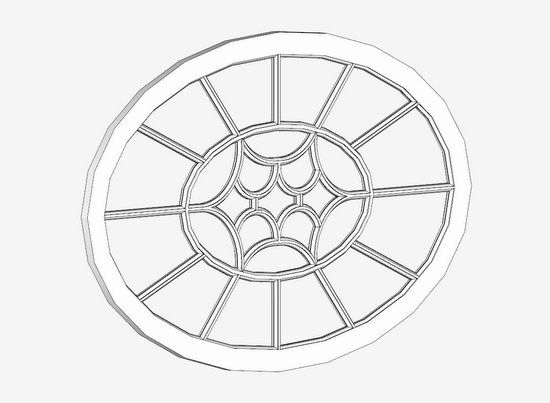
I again attended the Colonial Williamsburg conference, Working Wood in the 18th Century. This year the theme was Furniture of George and Martha Washington, therefore presentations and demonstrations focused on Mt. Vernon. One of the presentation was by Ted Boscana, joiner and carpenter of Williamsburg. He showed the process of creating the Mount Vernon Bull’s Eye Window in the west pediment, a complicated re-construction indeed.
I found the construction in SketchUp to also be a challenge. I started with a rough photo of a painting found on the Internet. It had a similar look and shape. I scanned the picture and imported to SketchUp followed by a re-sizing to an approximate full-size. I then began to layout arcs and centerlines as shown below. (It looks like I’m creating a spider web.)
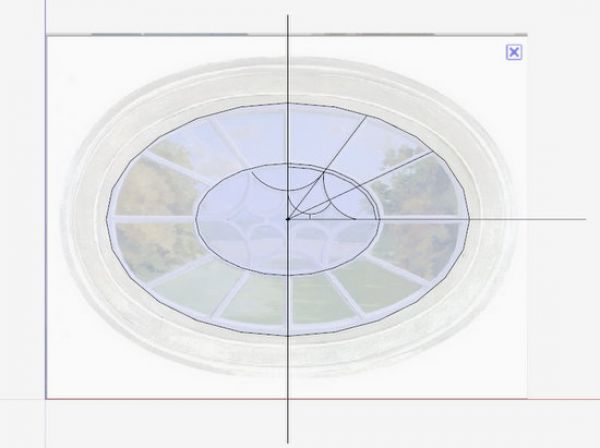
Step 1: To make the ellipses, I first draw a circle and then the Scale Tool. You can see the Scale Tool’s grips surrounding the circle. Grab one of the middle grips and pull horizontally to the length of the long axis. Hold the Cntl Key (Option key on the Mac) while doing this re-shaping as it will cause the elongation to work symmetrically around the original circle’s center.

Step 2: I located centerlines for spokes and assumed that they would intersect with the center of the ellipses.
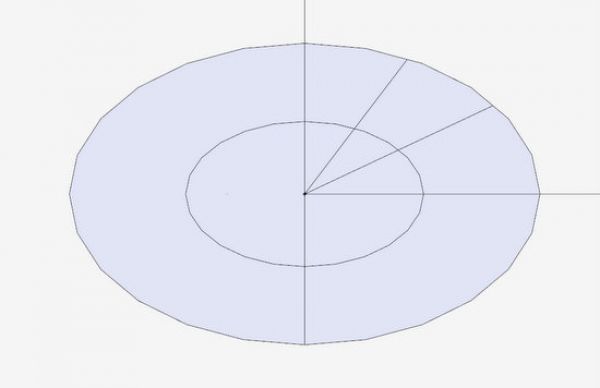
Step 3: Since the window is symmetrical about two axes, I began working only on a quartile as shown below.
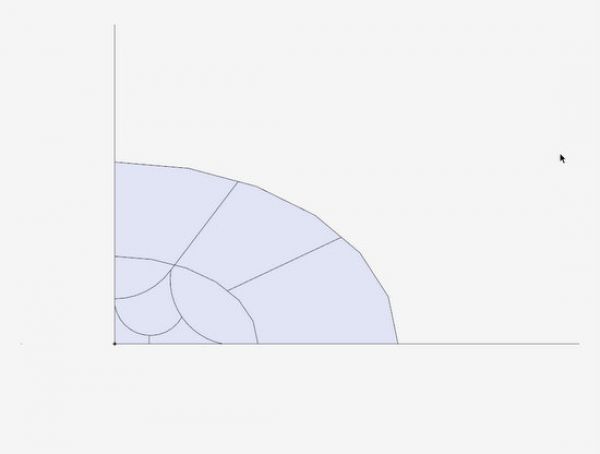
Step 4: Around the centerlines I began sizing the individual pieces in width.

Step 5: All of the pieces in the window are shaped as a typical window muntin cross-section. I created a shape as shown below and it provides for a rabbeted back to accommodate the small window glass segments.

Step 6: In preparation for shaping the pieces, I separated the window faces into the following components as follows. Then I gave all the pieces a common thickness with the Push/Pull Tool.
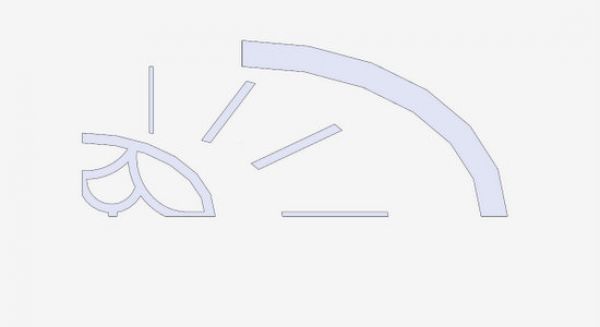
Step 7: The outer ring is shaped with only half the molding shape. The illustration below shows the setup for doing a Follow Me with this half-profile shape on the inner edge. The profile needs to be perpendicular to the path, so I’ve extended the path slightly on the red axis. Also, I’ve extended the path on the other end, to insure that the Follow Me goes beyond the end of the outer ring.
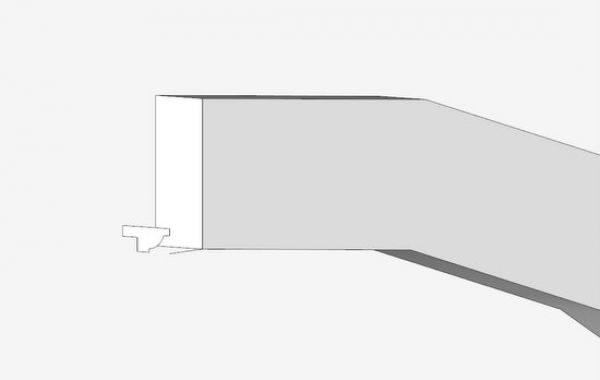
Step 8: After the Follow Me, I executed an Intersection with everything selected. Here is the result after clean-up.
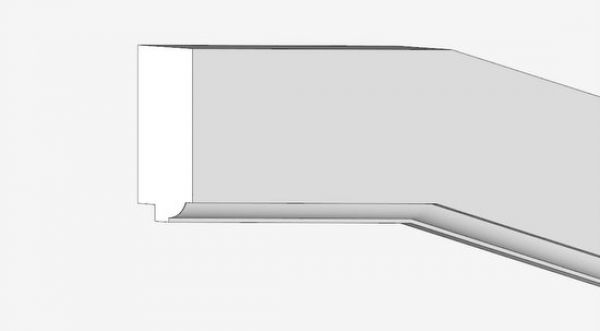
Step 9: Perform the Follow Me and Intersection with all the component parts as shown.
Step 10: I then reassembled the inner ring segments and executed another Intersection to clean-up the connections. I also “Hide” the edges at the boundary of the quartile assembly. This will prevent edges showing when I combine the four sub-assemblies.
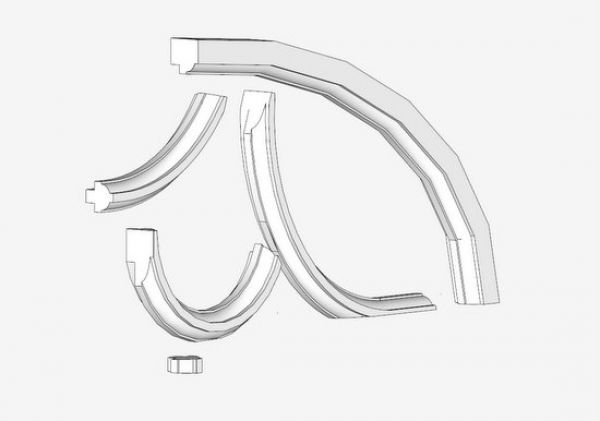
Step 11: I created V-cut sockets for the spokes as they connect to the outer and inner rings. I also made mortise and tenon joints at both ends of the spoke connections.
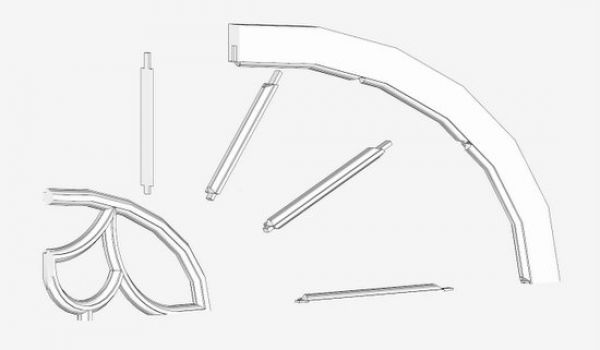
Here is the result in its final assembly.
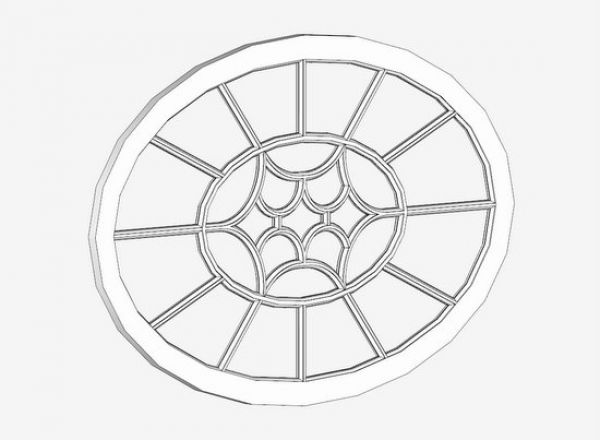
And here is a view of the back of the window with the rabbets to accommodate the glass segments.
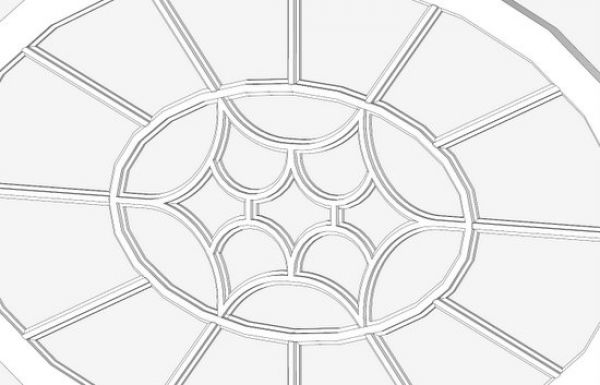
This was not an easy execution, lots of messy intersections. I suppose that is why I wanted to try the challenge. Thanks again to Williamsburg and the Mt. Vernon staff for another interesting and valuable conference.
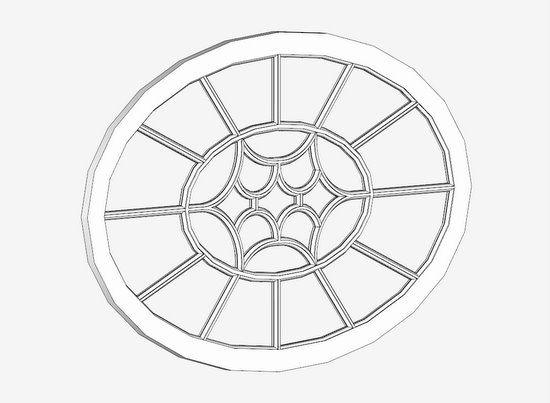
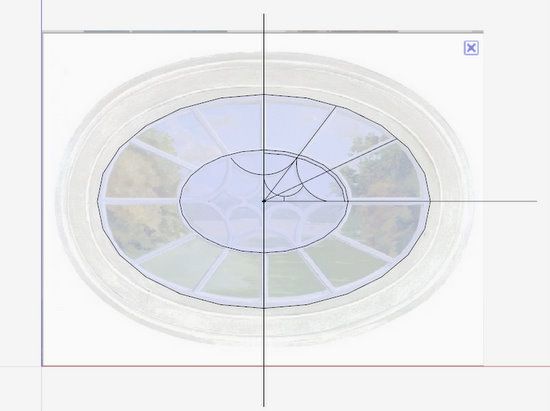
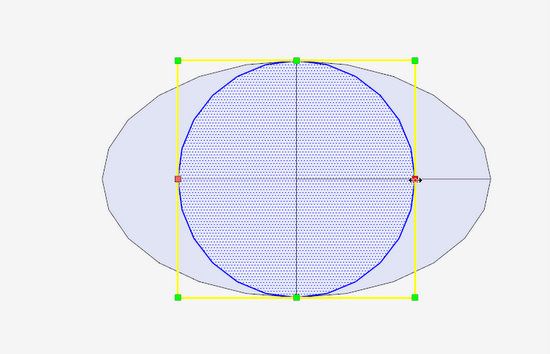
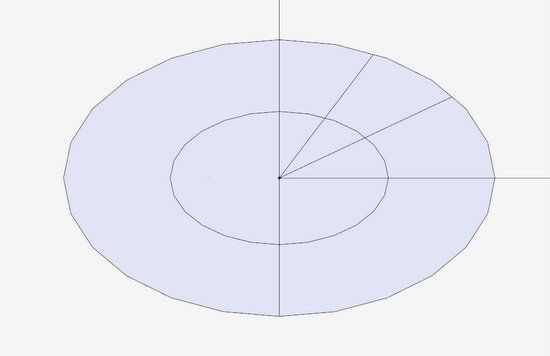
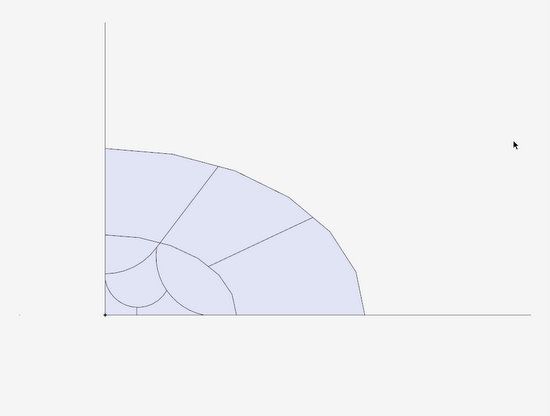
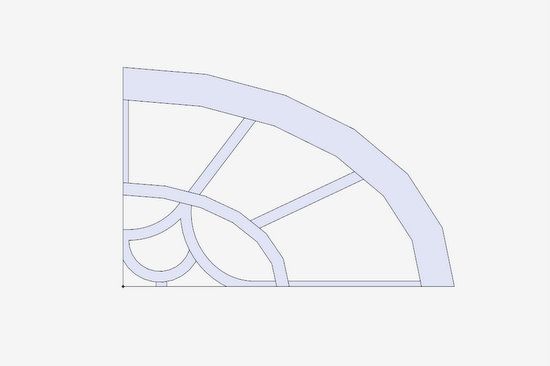

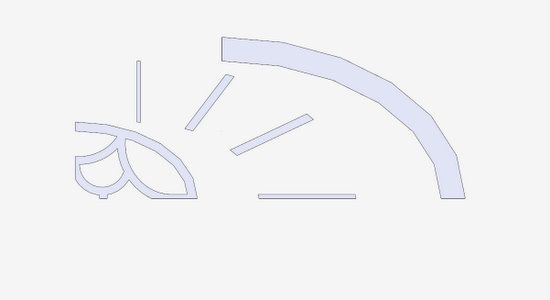
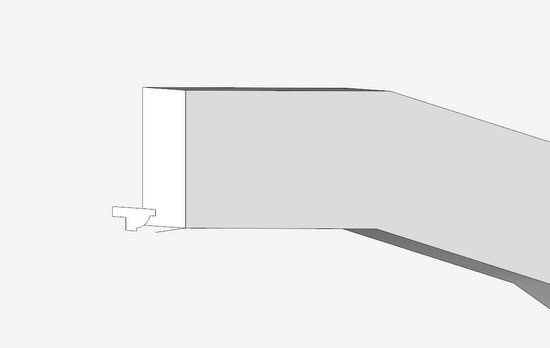
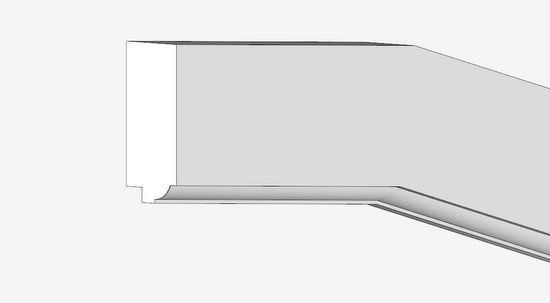
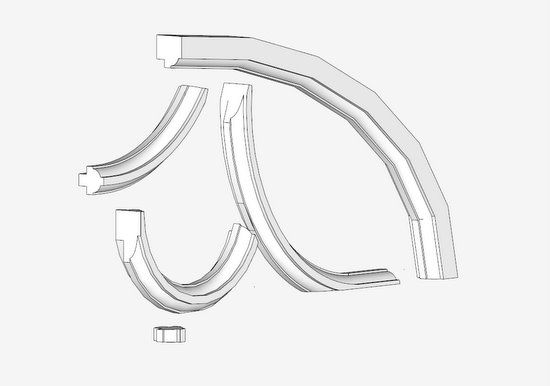
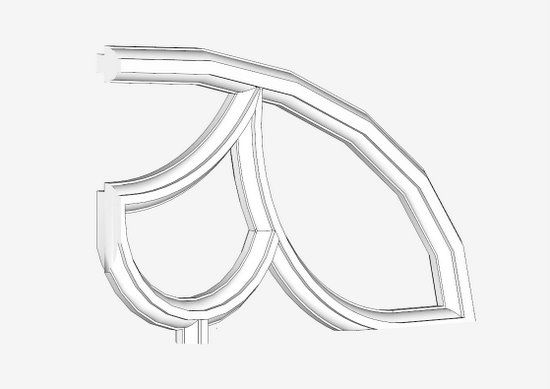
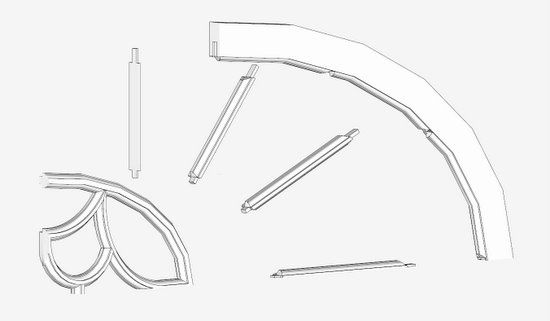
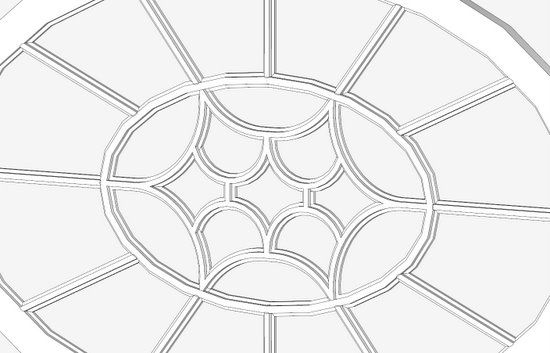




















Comments
Thanks. I liked your design. Did you build the window yet?
To WAIpaugh: No shop work yet on this piece. I wish it were "my design". But this piece was documented in a book by Batty Langley, "Treasury of Designs", in the 1700's. Apparently, George Washington copied it from this book.
Thanks for the comment....
Tim
I read about the program "Working Wood in the 18th Century Furniture of George and Martha Washington" co-sponsored by Fine Woodworking and the Mount Vernon Estate, Museum & Garden
in January of this year.
reference:
http://enfilade18thc.wordpress.com/2011/11/24/williamsburg-working-wood-january/
I wonder if there is a book or other media covering the furniture of Mount Vernon. I'm also curious if FWW has or is producing something along those lines or this has been
written up somewhere a mere mortal might access?
My folks had several commercial reproductions of Mount Vernon furniture, one of which I still have, the breakfast table in the photo (above reference). Very similar but the legs are plain and the brass is lighter weight.
I recognized this piece and some others on a tour of Mt Venon 4 years ago. There are two other pieces that could be reproductions that my folks had and but I couldn't truly identify them on the tour due to distance and time allowed. One is a small drop front secretary and the other is another breakfast table or drop leaf side table with decorative turned legs. The goal is to restore them.
Any help would certainly be appreciated.
Thanks
John Orvis
-----------------------------
http://www.mountvernon.org/
To JohnOSeattle: There were books sold by Mt. Vernon that were in the sales shop in Williamsburg during the event. I do not remember seeing any books that were specific to furniture nor ones that included design information.
There was reference to a drawing by Carlyle Lynch, Jr. of a Mt. Vernon Pembroke Table (ref. The Bruce Publishing Co. 1954).
Also there was reference to Albert Sack's "The New Fine Points of Furniture: Early American that included a Sheraton mahogany racquet-back armchair. George Washington apparently had a set of these.
You could check with Mt. Vernon. Also, a Google search could discover something of interest.
Tim
Thanks for the quick reply. I did send an inquiry to the museum
and will try the searches. A book or DVD on GW's furniture seems a natural. In your spare time ----
JO
To JohnOSeattle: I did make GW's desk he used in NY when first President. This desk design is popular and found in one of Margon's books.
However, this piece was not in Mt. Vernon.
Thanks for your comments......
Tim
Log in or create an account to post a comment.
Sign up Log in